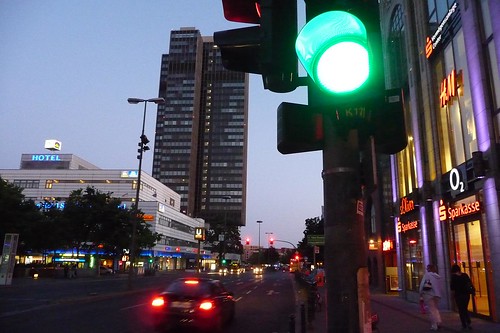輪胎滾動聲、引擎聲、離合器聲、剎車聲車外空氣呼嘯聲、喇叭聲、警報器聲與重低音音響聲,加起來成為高速道路附近的居民的吵雜夜晚。
「2Loud?」是一款新的手機應用程式,可於室內測量夜間的道路噪音。歐盟公共衛生官員指出,若具備大規模的社區參與,這款手機App可以為都市計畫提供極有價值的數據。
夜間噪音影響健康 歐盟民眾受不了
世界衛生組織建議,夜間噪音量不得超過40分貝。研究者在澳洲進行的先導研究顯示,幾乎有半數的使用者都發現,自己暴露在可能危害健康的夜間噪音中。歐盟則有將近30%的人口,暴露在嚴重到足以危及健康的噪音污染中。
歐盟及世界衛生組織(WHO)的官員均表示,夜間噪音污染可能會引發嚴重的疾病問題,例如心血管疾病、高血壓及心臟疾病。
歐盟統計局指出,去年有19%的歐洲人表示,自己在家中飽受噪音污染之苦。馬爾他是噪音汙染最嚴重的歐洲國家,有31%的家戶深受其害;其次是德國、羅馬尼亞及賽普勒斯,則約有26%的家戶暴露在噪音中。希臘以24%緊跟在後。
為了解決噪音問題,環境噪音指令(Environmental Noise Directive,END)2002年應運而生。環境噪音指令要求歐盟成員國,繪製主要道路、鐵路及機場的「日夜噪音地圖」,以評估受到噪音干擾的人數。然而,製作大規模的夜間噪音地圖,尤其是從屋內量測,往往困難重重而且所費不貲。
記錄室內交通噪音 做為都市規劃基礎
研究員開發了2Loud?應用程式來測量室內的交通噪音量。2Loud?能記錄背景噪音,並將數據上傳到研究員工作用的伺服器。研究員可從數據中擷取交通噪音的主要頻率,並分析這些頻率的音量大小。2Loud?已透過聲級計校準,以確保測量的準確度。
在澳洲的先導研究中,研究員將2Loud?分發給27名住在墨爾本布倫達拉市的居民,他們都住在靠近高速公路的地方。連續7周,參與者必須使用手機紀錄夜間屋內的噪音,共收集了超過1000小時的噪音記錄。夜間屋內噪音的大小範圍為23.2到58.5分貝(A),平均40分貝。整體來說,有45%的監測區域暴露在可能危害健康的噪音汙染中(超過40分貝)。結果顯示,透過社區參與,以手機收集屋內噪音程度及受害程度的數據是可行的。
環境噪音,特別是交通噪音,和其他形式的污染形式相比,較不受到歐盟的重視,但衍生的代價估計至少占歐盟生產毛額(GDP)的0.35%,2012年約為450億歐元。如果要減少代價並降低噪音帶來的危害,必須從人口密集、噪音污染嚴重的區域下手。
A new mobile phone application, called 2Loud?, can measure night-time noise exposure inside homes near roadways. EU health officials say that with large-scale community participation, the app could provide valuable data for urban planning.
The sounds of tires on the road surface, engine, transmission and braking noises, the sound of the air rushing around moving vehicles, car horns, alarms and boom boxes all add up to noisy nights for people living near highways.
In an Australian pilot study of the app, nearly half of those who used it found that they were exposed to potentially unhealthy levels of night-time noise.
Exposure to noise pollution at night can have serious health effects such as cardiovascular problems, high blood pressure and heart disease, according the EU and World Health Organization officials.
The WHO recommends that night-time noise exposure should not exceed 40 dB(A) – a measure of loudness as perceived by the human ear.
Overall, around 30 percent of the European Union population is thought to be exposed to noise pollution severe enough to cause health effects.
Eurostat reported Thursday that last year 19 percent of Europeans said they live in households that suffer from noise pollution.
Malta is the noisiest with 31 percent of households suffering, while Germany, Romania and Cyprus are next with roughly 26 percent of households suffering from noise. Greece is close behind with 24 percent of households disturbed by noise.
To address this problem, the Environmental Noise Directive (END) was established in 2002. The END requires EU Member States to create day and night-time “noise maps” for major roads, railways and airports, to assess the number of people disturbed by noise.
But mapping night-time noise on a large scale, particularly from within homes, can be difficult and expensive. This study examined how existing consumer technology and community participation could help to improve monitoring.
The researchers developed 2Loud? to measure indoor exposure to traffic noise. It records background noise and uploads the data to a server where researchers can work with it.
The key frequencies for traffic noise were extracted from the data and their loudness analysed. The 2Loud? application was calibrated against a sound meter to ensure accuracy of the recordings.
For the Australian pilot study, the application was distributed to 27 residents living close to highways in the city of Boroondara, Metropolitan Melbourne, Australia.
The participants recorded night-time indoor noise using their mobile phones over a period of seven weeks. Over 1,000 hours of noise readings were gathered during the study.
Indoor night-time noise recordings ranged from 23.2 to 58.5 dB(A), with an average of 40 dB(A). Overall, 45 percent of the monitored areas were exposed to potentially unhealthy noise levels (greater than 40 dB(A).
These results show that it is possible, through community participation with mobile devices, to collect reliable real-world data on noise levels and exposure from within homes.
In the European Union, environmental noise, especially traffic noise, has often received lower priority than other forms of pollution, yet its associated costs are estimated to be at least 0.35 percent of the EU’s GDP – around 45 billion Euros in 2012.
Reducing these costs and the health effects of noise will require targeting areas where noise pollution is especially bad in densely populated areas.
This small study suggests that if deployed on a larger scale, a mobile phone measurement and community participation approach could be used to provide inexpensive data to help urban planners create healthier urban environments.
※ 全文及圖片詳見:ENS
※ 本文為教育部科學人文跨科際人才培育計畫(簡稱SHS計畫)所屬南區區域推動中心,舉辦「環境新聞編譯工作坊」之成果展現,特別感謝《科學人》編輯群協助審校。


